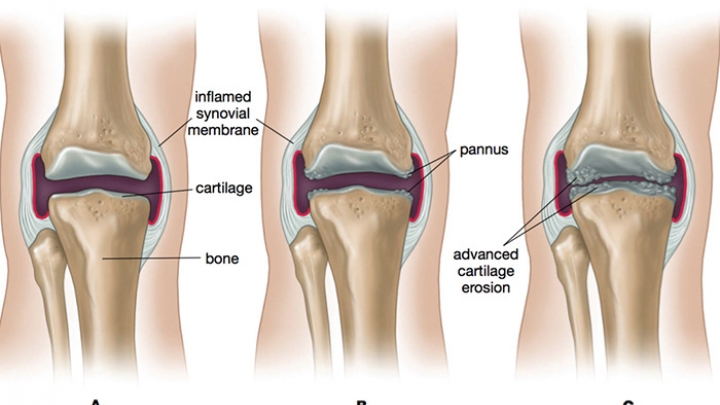(RxWiki News) Before you can understand the causes of and treatments for arthritis, it is helpful to know more about your joints.
A joint is the place where two or more movable bones come together (articulate). Think of your knees, hips, and the many joints in your hands and feet. Healthy joints move smoothly, thanks to a complex system of lubrication and shock absorption.
The components of a joint include:
- Cartilage is a tough slippery material that coats the ends of bones and provides a shock-absorbing cushion to prevent them from rubbing together. Joint (articular) cartilage is composed primarily of water and strong protein fibers called collagen. The knee joints, which bear most of the body’s weight, have an extra shock-absorbing layer called meniscal cartilage, which looks like two C-shaped pads.
- Joint capsule is the membrane sac enclosing the entire joint.
- Joint space is the narrow, open area between two bones. This is where the cartilage meets.
- Synovial membrane (synovium) is the inner membrane lining the joint capsule. It secretes a slippery substance called synovial fluid.
- Synovial fluid is the fluid that fills the space around and between bones. It helps to keep joints moving with little friction.
- Ligaments, tendons, and muscles are structures located just outside a joint that support the bones and help the joint bend and move.
- Ligaments are strong, band-like tissues that connect one bone to another at a joint.
- Tendons are fibrous cords that connect muscles to bones.
- Muscles are strong, fibrous tissues that work in pairs, flexing and contracting to produce movement in the joints.
- Bursae are fluid-filled sacs located between ligaments, tendons, muscles, and bones. Bursae help these structures move smoothly against each other. Different forms of arthritis cause inflammation of various structures within and around joints. Osteoarthritis primarily affects the joint cartilage, whereas rheumatoid arthritis generally starts with inflammation of the synovial membrane.
In a normal joint, the entire joint is enclosed in a capsule.
- The synovial membrane, or inner lining, of this capsule produces a slippery substance called synovial fluid that lubricates the space between the bones.
- The end of each bone is covered with resilient cartilage, which acts as a natural shock absorber.
In a joint affected by osteoarthritis (the most common type of arthritis), the cartilage progressively breaks down so that bone surfaces are not protected from rubbing together.
- The joint gradually loses its shape and alignment.
- The ends of the bones thicken and develop uneven bony growths known as spurs or osteophytes.
- Fragments of loose cartilage or bone may float around within the joint space.
- All this damage can cause pain and limit the joint’s range of motion.

